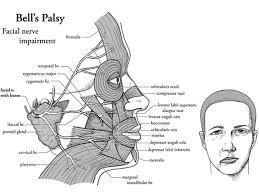Abstract
BACKGROUND AND PURPOSE:
There have been few studies to estimate the prevalence of Bell's palsy (BP) in Arab countries. A community-based study was conducted to estimate the prevalence, incidence rates, precipitating factors, and outcome of BP in Qena Governorate, Egypt.
SUBJECTS AND METHODS:
A door-to-door survey was carried out, with random sampling of 10 districts, involving 9303 inhabitants, 51.1% males and 48.9% females. Seventeen subjects were positive in screening questionnaire and referred to Qena University hospital and were subjected to a full clinical examination, House Brackmann's Facial grading system.
RESULTS:
In a total population of 9303 individuals, 15 cases were confirmed as having BP giving a prevalence rate (PR) 161/10(5) for all ages 95%CI (80-243). It was slightly but not significantly higher among women and the rural community. The incidence rate of BP was 107/10(5). The highest age-specific rate was 40-49 years age. The most frequent precipitating factors for an episode of BP were exposure to air draft in 40%, physical stress (13.3%), and upper respiratory tract infection (13.3%). Moreover, 46.7% had predisposing risk factors, DM and hypertension in 33.3%. Sixty percent of cases had complication and poor outcome.
CONCLUSION:
The overall prevalence and incidence rates of BP in Qena governorate were high. This could be related to the variation in day and night temperature in our community and the susceptibility to air draft exposure during the night. The high frequency of poor outcome among studied cases suggests that better local guidelines should be implemented to recognize and treat BP.


